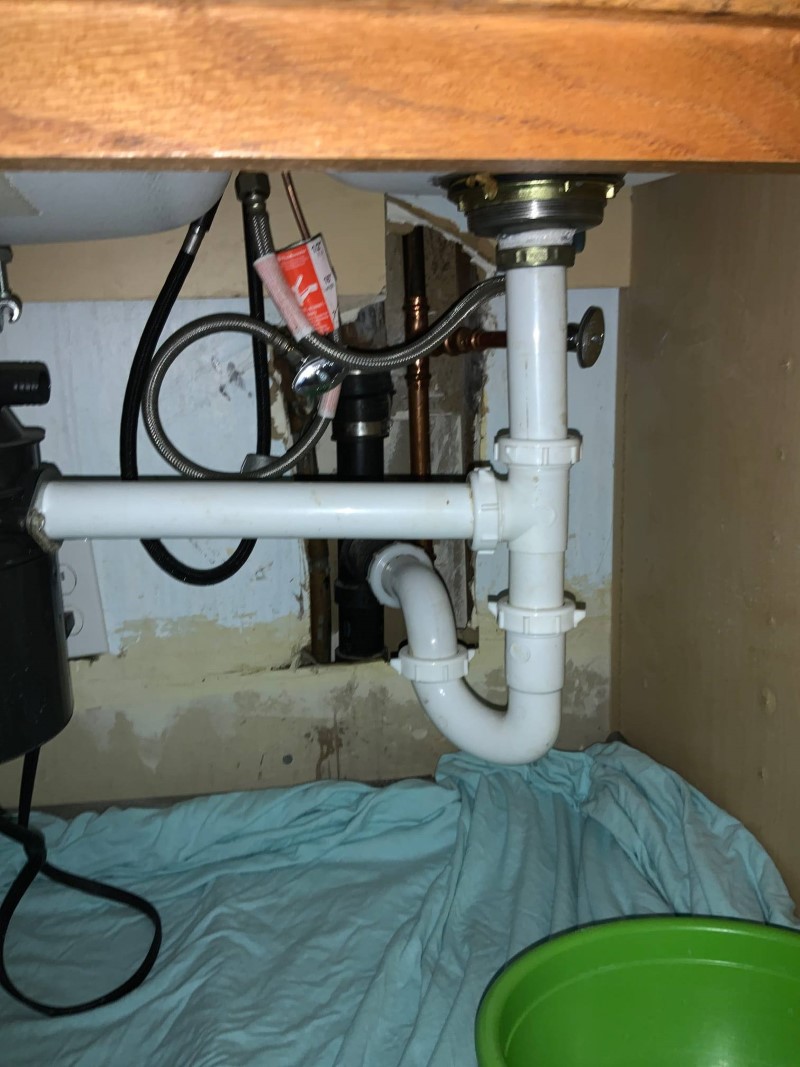Your Comprehensive Guide to Fixing a Leaky Garbage Disposal
Your Comprehensive Guide to Fixing a Leaky Garbage Disposal
Blog Article
Everybody has got their personal way of thinking when it comes to Why Is .

Waste disposal unit are crucial kitchen area home appliances that help in getting rid of food waste effectively. Nonetheless, a dripping waste disposal unit can be an aggravating and messy problem to take care of. Fortunately, lots of leaks can be dealt with conveniently with a few easy steps. In this article, we will go over how to deal with a dripping garbage disposal efficiently.
Intro
Garbage disposals are set up under cooking area sinks and are created to shred food waste right into smaller sized items, allowing it to go through the plumbing system quickly. While these tools are generally dependable, leaks can occur in time because of deterioration, loose links, or damages to the system.
Step-by-Step Guide to Fixing a Dripping Waste Disposal Unit
Turn Off the Power
Before attempting any type of repair work, ensure that the power to the waste disposal unit device is switched off to stop the danger of electrical shock.
Find the Leak
Identify the specific place of the leak and determine the reason
Tighten up Connections
Utilize a wrench to tighten up any loose connections between the disposal device and the pipes system.
Change Seals or Gaskets
If the leakage results from used seals or gaskets, remove the old components and replace them with new ones.
Patching Cracks or Openings
For splits or openings in the disposal system, use epoxy or an appropriate patching material to secure the damaged location.
Recognizing the Resource of the Leakage
Before attempting to repair a dripping waste disposal unit, it is essential to determine the resource of the leak. This can commonly be done via visual assessment or by performing easy tests.
Visual Evaluation
Inspect the garbage disposal system meticulously for any signs of water leakage. Pay close attention to locations around seals, gaskets, and link points.
Testing for Leakages
One way to examine for leakages is by running water via the disposal device and checking for any type of noticeable signs of leakage.
Typical Root Causes Of Leakages in Rubbish Disposals
Worn Seals and Gaskets
Seals and gaskets play a vital role in avoiding water from leaking out of the garbage disposal. With time, these components can degrade, leading to leakages around the disposal device.
Loose Connections
The links between the waste disposal unit and the plumbing system can come to be loose in time, causing water to leak out throughout operation.
Cracks or Openings in the Disposal Device
Physical damage to the garbage disposal, such as cracks or holes in the housing, can also cause leaks.
Tools and Materials Needed for Dealing With a Leaking Waste Disposal Unit
Prior to starting the repair service procedure, gather the necessary tools and materials, consisting of a screwdriver, adjustable wrench, plumbing's putty, replacement seals or gaskets, and epoxy or patching material for fixing splits or openings.
Checking the Garbage Disposal After Fixing
Once the repair is full, test the waste disposal unit by running water with it to guarantee that the leak has been solved.
Preventive Maintenance Tips to Stay Clear Of Future Leakages
To avoid future leakages, it is necessary to carry out normal maintenance on your waste disposal unit. This consists of maintaining it tidy, preventing putting non-food products or tough items down the disposal, and occasionally checking for leaks or various other problems.
Conclusion
In conclusion, repairing a leaking waste disposal unit is a relatively simple process that can be completed with standard devices and products. By complying with the actions described in this short article and exercising preventative upkeep, you can maintain your waste disposal unit in good working condition and prevent expensive repair work in the future.
What to Do About a Leaking Garbage Disposal
A leaking garbage disposal often goes unnoticed until you confront a sopping cabinet, a foul-smelling puddle, or an audible drip-drip-drip from the unit. The fix can be frustrating, too, because the leak can stem from a number of components in the system. Fortunately, with a little sleuthing, you can zero in on the leak and—depending on the exact location—stop the icky oozing and repair the component that caused it. Worst case scenario, if it turns out that the garbage disposal must be replaced, installing a new one is a reasonable do-it-yourself task for those with basic plumbing skills. Read on to keep the cash you’d otherwise hand over to a pro.
Prepare to find the leak
Prior to testing the garbage disposal for leaks, unplug it at the wall outlet and turn off the power from the breaker box to prevent electrical shock. Then insert a watertight sink stopper into your sink drain and wipe the unit dry with a clean cloth. In any handy container, mix a few drops of food coloring into a few cups of water, and pour the dyed water onto the sink stopper to help you locate the leak.
Investigate the source
the top, where the disposal meets the sink drain the side, where the dishwasher hose or main drain pipe connects to the disposal or the bottom of the unit Inspect each of these locations while gliding a light-colored rag over the unit; the dyed water will readily show on the rag and reveal the location of the leak. If a leak isn’t immediately apparent, remove the sink stopper and pour a few more cups of dyed water down the sink drain, then check for leaks again. Leaks near the top of the unit are more likely to show themselves while the sink is plugged, while side and bottom leaks are more noticeable while the sink is unplugged.
The metal sink flange that sits directly inside the sink drain is typically sealed around the top with plumber’s putty (a clay-like sealant) and then secured from under the sink with bolts. If the plumber’s putty deteriorates, or the bolts loosen, the flange can no longer form a watertight seal between the sink drain and the disposal—which could cause a leak at the top of the unit.
To reseal the leaky flange, you must first detach the garbage disposal. Start by loosening the screws securing the main drain pipe to the disposal, then loosen the screws in the metal clamp securing the dishwasher hose to the disposal and detach the drain pipe and dishwasher hose from the disposal. Loosen the screws in the mounting ring that connects the disposal to the metal mounting assembly beneath the sink, then pull down the disposal and carefully set it on a clean, dry surface. Loosen the bolts in the mounting assembly with a wrench, then pull down the mounting assembly and set it near the disposal.

I stumbled upon that article on Tips on Fixing a Leaking Garbage Disposal while doing a lookup on the internet. Please set aside a second to distribute this post if you enjoyed it. Thank you so much for taking the time to read it.
Schedule Free Estimate Report this page